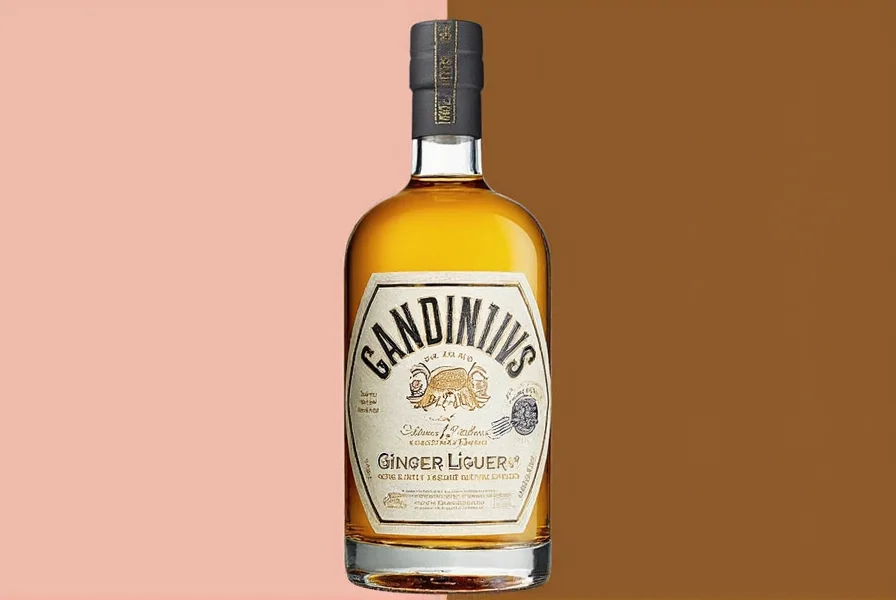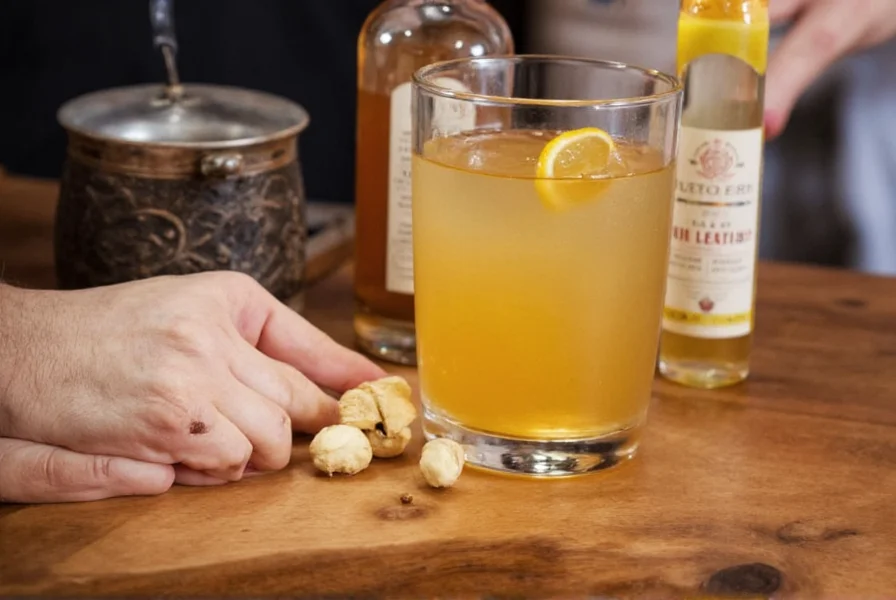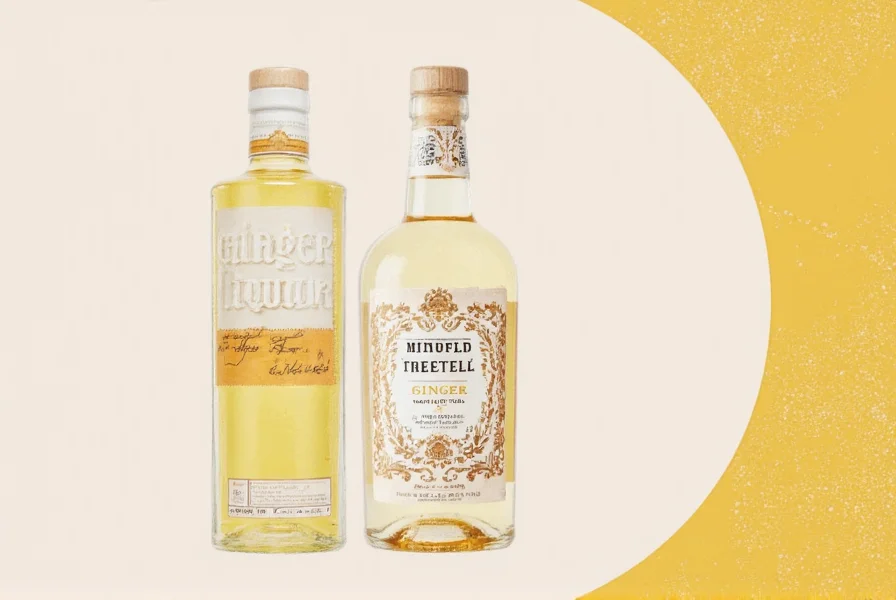Ginger liqueur has become increasingly popular among mixologists and home bartenders seeking to add complex spice notes to their creations. This distinctive spirit bridges the gap between traditional hard liquors and non-alcoholic ginger beverages, offering unique versatility in both drinking and cooking applications.
A Brief History of Ginger Liqueur
The origins of ginger liqueur trace back to traditional medicinal tonics. For centuries, ginger root has been valued across Asian and African cultures for its digestive and anti-nausea properties. Early versions of ginger liqueur emerged as "ginger wines" in 18th century England, where ginger was combined with wine, sugar, and sometimes additional spices.
Modern commercial ginger liqueurs began appearing in the late 19th and early 20th centuries. The most famous example, Drambuie, actually contains honey and Scotch whisky along with ginger and other botanicals, though it's often mistakenly categorized purely as a ginger liqueur. True ginger liqueurs focus primarily on the ginger root as the dominant flavor profile.
How Ginger Liqueur Is Made
The production process for ginger liqueur involves several key steps that determine its final character:
| Production Stage | Key Details | Impact on Final Product |
|---|---|---|
| Ginger Selection | Fresh young ginger preferred for brighter flavor | Affects spiciness level and freshness of taste |
| Extraction Method | Infusion in neutral spirits vs. distillation | Infusion yields more robust ginger flavor |
| Sweetening | Sugar content typically 20-30% | Balances heat of ginger, creates smooth mouthfeel |
| Aging | Short aging in stainless steel (not wood) | Mellows harsh notes while preserving ginger character |
Artisanal producers often use a simple process: fresh ginger is peeled, sliced, and steeped in high-proof neutral spirits for several days. The mixture is then strained, sweetened with sugar syrup, and sometimes filtered for clarity. Commercial producers may use ginger extracts or concentrates for consistency.
Understanding Ginger Liqueur's Flavor Profile
Ginger liqueur delivers a complex sensory experience that distinguishes it from other ginger-based beverages. The best products showcase:
- Initial heat - A gentle warming sensation from the ginger's natural compounds
- Sweet balance - Sugar content that complements rather than overwhelms the ginger
- Citrus undertones - Natural bright notes that emerge during infusion
- Smooth finish - Absence of harsh alcohol burn when properly balanced
When evaluating quality ginger liqueur, look for products that maintain the distinctive ginger character without artificial flavors. The finest examples showcase the natural variation in ginger's flavor profile - sometimes more citrusy, other times with earthier notes.

Practical Applications: Beyond the Cocktail Glass
While ginger liqueur shines in cocktails, its culinary applications extend far beyond drinking. Consider these versatile uses:
Cocktail Creations
Ginger liqueur serves as an excellent base or modifier in numerous drinks. Three signature cocktails demonstrate its range:
- Ginger Smash - 2 oz bourbon, 0.75 oz ginger liqueur, 0.5 oz lemon juice, 3 fresh mint leaves. Muddle mint with lemon juice, add other ingredients, shake, and strain over ice.
- Spiced Mule - 1.5 oz vodka, 0.75 oz ginger liqueur, 0.5 oz lime juice, top with ginger beer. Build in a copper mug with ice.
- Ginger French 75 - 1 oz gin, 0.5 oz ginger liqueur, 0.5 oz lemon juice, top with champagne. Shake first three ingredients, strain into champagne flute, top with champagne.
Culinary Uses
Professional chefs and home cooks alike appreciate ginger liqueur's ability to enhance both sweet and savory dishes:
- Add to marinades for chicken or pork (replaces some of the liquid in standard recipes)
- Enhance fruit compotes and poaching liquids for pears or apples
- Substitute for some liquid in cake batters or cookie doughs
- Create glazes for roasted vegetables or meats
- Infuse whipped cream for desserts

Storage and Shelf Life Considerations
Unlike fresh ginger products, ginger liqueur has excellent shelf stability when stored properly. The high sugar and alcohol content naturally preserves the product. For optimal quality:
- Store in a cool, dark place away from direct sunlight
- Keep tightly sealed when not in use
- Refrigeration isn't necessary but can extend peak flavor
- Consume within 2-3 years for best flavor (though it remains safe indefinitely)
Noticeable flavor degradation occurs when ginger liqueur develops off-notes, becomes overly sweet, or loses its characteristic ginger aroma. Properly stored, most commercial ginger liqueurs maintain quality for several years beyond their production date.
Ginger Liqueur vs. Similar Products
Understanding the differences between ginger liqueur and related products prevents confusion in recipes and cocktail preparation:
- Ginger beer - Non-alcoholic, carbonated, less sweet, more intense ginger bite
- Ginger wine - Fermented from ginger, typically 14-20% ABV, less sweet
- Ginger syrup - Non-alcoholic, higher sugar concentration, used as mixer
- Ginger extract - Highly concentrated, used in small quantities for flavoring
When substituting between these products, adjust sweetness and alcohol content accordingly. Ginger liqueur's unique combination of alcohol content and sweetness makes it irreplaceable in certain cocktail applications.
Frequently Asked Questions
What is the typical alcohol content of ginger liqueur?
Most commercial ginger liqueurs range from 20% to 30% alcohol by volume (40-60 proof). This places it between standard liqueurs and stronger spirits, making it versatile for cocktails without overwhelming other ingredients.
Can I make ginger liqueur at home?
Yes, homemade ginger liqueur is straightforward to make. Peel and slice fresh ginger, steep in high-proof vodka for 3-7 days, then strain and add simple syrup to taste. The ratio typically ranges from 1:1 to 2:1 ginger-to-vodka by volume, with syrup added to achieve desired sweetness.
How does ginger liqueur differ from ginger schnapps?
Ginger schnapps is typically higher proof (around 35-40% ABV) with a more intense, sometimes artificial ginger flavor and less sweetness. Ginger liqueur has a smoother, more balanced profile with noticeable sweetness and a focus on natural ginger character.
What are the best cocktails for beginners using ginger liqueur?
Beginners should try the Ginger Mule (vodka, ginger liqueur, lime juice, ginger beer) or a simple Ginger Sparkler (ginger liqueur and prosecco). These require minimal ingredients and technique while showcasing the liqueur's flavor.











 浙公网安备
33010002000092号
浙公网安备
33010002000092号 浙B2-20120091-4
浙B2-20120091-4